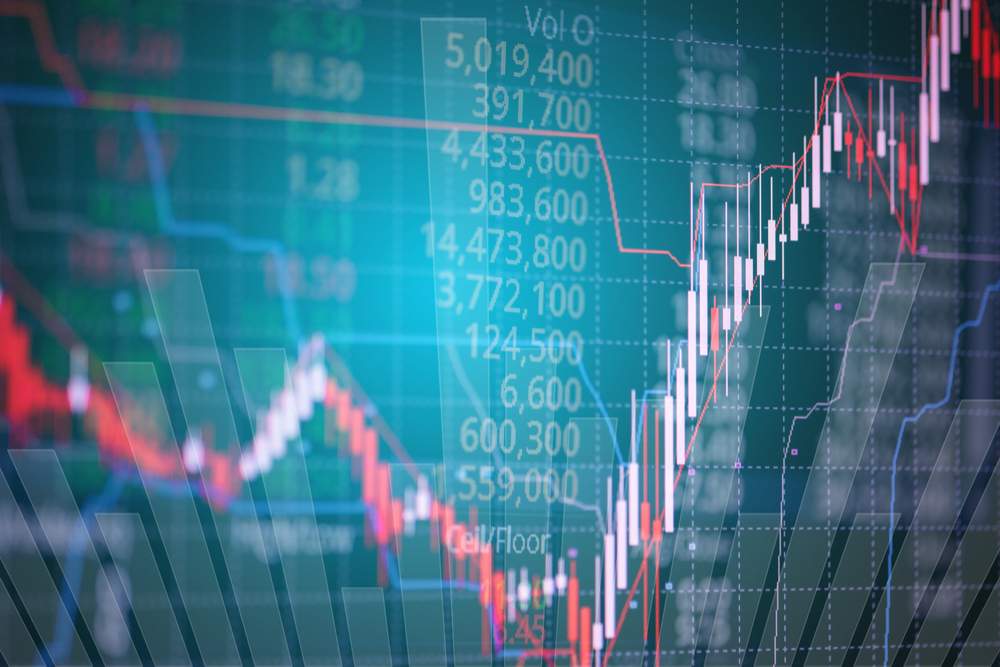What is a Bearish Market

At any point in time, the financial markets are often described as bearish
or bullish. This is mostly evident in the price charts of financial market
securities. In a bearish market, prices tend the fall while a bullish
market is the exact opposite where the prices are going up. The names
originate from the attacking methods of the animals; bear and bull. A bear
attacks by clawing down its prey while a bull attacks by thrusting its
horn violently in an upward direction.
Table of contents
- Introduction
- What is a bearish market?
- Characteristics of a bearish market
- Contract for Differences
- How to trade a bear market with r1investing.
- Summary
- FAQs
What is a Bearish market?
A bearish market is a phenomenon where the prices of financial securities
continue to decline over a period of time. A
bear market
is confirmed when the market price has fallen by at least 20% from a
recent high. Bear and bull market are terms commonly used to describe the
conditions of a financial market such as the stock market, forex, CFDs,
commodities, etc. Generally, when the stock markets’ shares are
depreciating, it is described as a ‘bear’ market. But, when
the stock prices are appreciating, it is referred to as a
‘bull’ market.
Characteristics of a bearish market
The direction of market prices is of great concern to every investor
because it determines the size of his portfolio. Generally, a declining
market trends are not desired by most investors across the financial
markets. This is because of its negative impact on the stock markets,
economy and investors’ pockets.
Below are some of the characteristics of bear markets:
Below are some of the characteristics of bear markets:
1. Demand and Supply
When the prices are declining, more investors are willing to sell their
securities which create a high supply greater than the demand. Of course,
this low demand and excess supply leads to a price drop in tradable assets
across the markets. At such times, several investors may sell in order to
limit their losses. But forex and CFD traders are unperturbed even though
CFDs derive their prices from the underlying markets which may be surging
or declining.
2. Weak economy
A weak economy is generally associated with a bear market. When prices
decline, especially in the stock market, the economy is adversely
affected. The share prices of the big companies drop and most of them look
for ways to reduce costs. They resort to staff retrenchment thereby
increasing the level of unemployment in the economy. The major stock
indices continue to fall and if the trend continues, then, a recession is
imminent.
3. Investor Pessimism
Most investors are reluctant to invest in a bear market. In order to curb
their losses, investors usually start moving out their money from stocks
to fixed income securities. Investor psychology makes a huge impact on the
financial markets. When the market sentiment is negative, potential
investors withhold their funds and wait for positivity while investors
pull out their funds.
Contract for Differences (CFDs)
Contract for differences (CFDs) are a type of investment that enables a
trader to predict the price direction of an underlying asset at a given
time without ownership claims. It is just contracts between a financial
service provider and a trader whereby the trader just speculates on the
prices of selected financial instruments such as stocks, forex,
commodities, indices, etc. Though complex and very risky, an advantage of
CFD trading
is that the CFD trader is unaffected by either a bullish or a bearish
market. This is because the trader is only forecasting the price direction
of the trading instrument and holds no assets.
How to trade a bear market with r1investing:
CFD traders open positions on financial assets to buy or sell through
software trading platforms provided by online financial services
providers. For every tradable asset, a buying and a selling price is
quoted. If a trader predicts a bear market for a particular asset at a
given time, he places a ‘sell’ order on the trading platform.
But if he believes that prices will go up, he buys the instrument. The
trader’s decision is informed from his trading strategies which may
include technical analysis or fundamental analysis principles.
Below are the steps to trade a bearish market with r1investing:
- Click on the button ‘open account’.
- Fill the series of forms that displays.
- Make a deposit using any of the payment options available.
- Verify your account by uploading your government issued ID card and a recent utility bill.
At this juncture, you will wait for r1investing to verify and approve your
email. If successful, continue as follows:
- Download and install the MT4 trading platform on your windows computer, iPhone or android device. If you wish to use the WebTrader version, click on the provided link to launch the terminal on your web browser.
- Login with the details supplied with your registration.
- On the MT4 home screen; look for the asset you wish to trade on the ‘Market watch’ window. If you are using the mobile app, tap on the ‘quotes’ tab.
- Double-click on the asset to display the ‘order’ window.
- Select the lot size, input ‘stop loss’ and ‘take profit’ prices as desired.
- Click on ‘sell’ to open the trade position since you believe that a bear market is imminent.
- Click ‘close’ when you are ready to terminate the trade and lock-in your profits or losses.
Summary
A financial market condition where prices are falling steadily over a
given period of time is referred to as a ‘bearish market’. It
affects all financial markets including stocks, CFDs, forex, commodities,
etc. When prices decline, investors lose their confidence and become
pessimistic, stocks decline and unemployment is rife. The overall result
is a weak economy. But CFD traders take advantage of both the bear and
bull market because they do not buy the real asset, rather they only
speculate on the prices of the trading assets.
Below are some of the reasons why you may choose to trade with
r1investing:
- Very low and competitive spreads.
- Efficient customer support desk available 24/5.
- Leverage up to 1:500 for professional clients
- Over 350 trading assets
- Comprehensive training resources available.
FAQs
What is the difference between a bullish and a bearish market?
A bullish market refers to a market condition where prices are soaring
higher and the economy is flourishing while a bearish market means that
prices are going down depicting a receding economy.
Is a bearish market good or bad?
To the CFD trader, a bearish market presents a good opportunity to sell
short on the assets involved. Since traders only speculate on the prices
of the traded assets, the CFD trading is unaffected by a bull or a bear
market. But, in stock trading, bear markets are generally not desirable
though it presents opportunities to buy more shares with the hope that the
market will reverse in the near future.
How do bearish investors make money?
In CFD trading, bearish investors open ‘sell’ positions on the
trading platforms provided by the financial services provider. Stock
market speculators and investors try to make money by selling short.
How do you know if a market is bearish?
From the financial instrument’s chart, trend patterns can be
identified. A downward trend with lower highs and lower lows indicates a
bear market. It can also be confirmed through the use of technical
indicators.
Should you buy in a bear market?
If you are trading CFDs, you only sell in a declining market and buy in a
bullish market. In the stock market, a bear market presents a good
opportunity to buy shares of different companies at a low price with the
hope that the shares will appreciate in future. When this happens, the
trader will either sell at a profit or wait to earn dividends when profits
are shared to investors.
The information above is for education purposes only and cannot be
considered as investment advice

